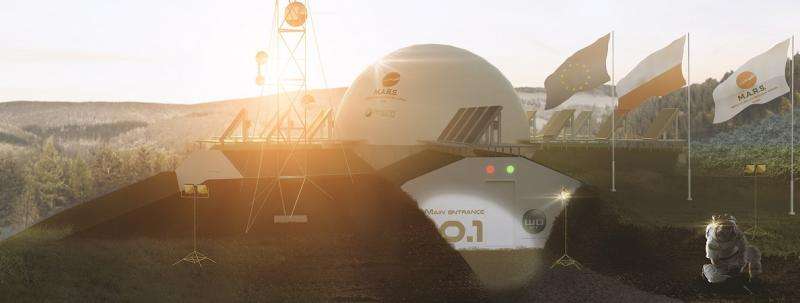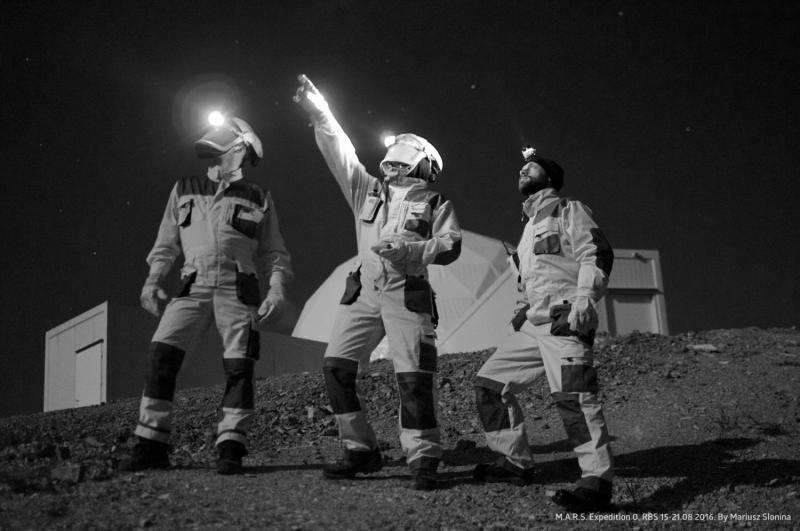Six people to spend two weeks in Mars simulation habitat in Poland

A group of six space exploration enthusiasts plan to spend two weeks in isolation in a Mars simulation dome mimicking life on the Red Planet. The mission, known as the Poland Mars Analogue Simulation (PMAS), will take place from March 19 to April 1, 2017, inside the Modular Analog Research Station (M.A.R.S.) habitat located near Rzepiennik Biskupi in southern Poland.
The main goal of PMAS 2017 is to conduct research that could someday be crucial for future astronauts living and working on the Martian surface. During their stay inside the dome, the analogue crew will carry out a variety of experiments in the field of geology, biology, psychology, agriculture, and astronomy.
Working in full isolation, the mission team will conduct experiments and measurements in and around the habitat and the nearby exploration site. They will log their activities and report everything to the Mission Support Center (MSC) located in Torun, Northern Poland, some 330 miles (531 kilometers) away from the M.A.R.S. dome.
"Mission Support will provide the astronauts with all necessary information and an optimised daily schedule that say which experiment or activity should be conducted in order to not exceed, for example, the limited power supply of the habitat," Sebastian Hettrich, PMAS 2017 Project Lead and Mission Director, told SpaceFlight Insider.
PMAS 2017 is managed by the Space Generation Advisory Council (SGAC) in support of the United Nations Program on Space Applications. SGAC is a global nonprofit, non-governmental organization and network representing university students and young space professionals to the United Nations, space agencies, industry, and academia.
SGAC believes the PMAS 2017 mission will be unique among other Mars analogue simulations, as it will focus on human-robotic interactions. Future human exploration of the Red Planet will require significant help from robots to assist astronauts carrying out their experiments. Therefore, during their two-week stay, PMAS 2017 participants will test such technologies as cameras on rovers and mobility systems that could be necessary for future operations on the Martian surface.
Hettrich said a usual workday for a PMAS astronaut will be basically like a normal working day, except that the participants live together with their colleagues for the entire mission duration.

"They get up, have breakfast and a morning meeting together, where they view and discuss the schedule for the day, before they start with the scientific work," Hettrich said. "With a crew of six astronauts, three of them could go outside for an extra-vehicular activity, while the other three should stay inside, occupying the communication station, maintaining the habitat and working in the laboratory to analyse the samples from the previous day."
The astronauts' only communication with the outside world will be through a time-delayed link – 15 minutes – simulating a real communication delay due to the distance between Earth and Mars.
Besides mimicking a real Mars mission, PMAS 2017 will also include a three-day lunar simulation in partnership with the European Space Agency (ESA). During the lunar mission phase, the communication with the MSC will be in near real-time.
Characteristic of space exploration simulations, PMAS 2017 will also study how isolation and a high degree of anxiety and stress may affect the crew during a hazardous deep space mission. The interactions among crew members will be monitored to gain a better understanding of the psychological issues they may face.
"Some people might be put off by the idea of being isolated in a dome for two weeks with five strangers and no social media, but I think it sounds like great fun, and I'm hugely looking forward to finding out what it's like to be part of a mission crew," Yael Kisel, PMAS 2017 analogue astronaut, told SpaceFlight Insider.
Hettrich said that isolation is always an issue when being confined in a small habitat with the same five faces for a duration of two weeks without real-time communication with the outside.
"This, for sure, can lead to some tension; for example, within the crew, when two astronauts have different opinions on how to analyse a sample correctly. And that happens in most missions, also in real space missions – or that the astronaut crew creates a 'we against them' [attitude] toward the Mission Support Team," Hettrich said.
The PMAS 2017 project is currently in the stage of raising money. The team started a crowdfunding campaign on Indiegogo to collect the necessary funds needed to start the mission. They aim to raise $30,000.
Provided by Astrowatch.net



















